The Oppenheimer case: A study in the abuse of law
By Harold P. Green | July 17, 2023
The Oppenheimer case: A study in the abuse of law
By Harold P. Green | July 17, 2023
(Article originally published in the September 1977 issue of the Bulletin of the Atomic Scientists, Vol. 33, No. 7, page 12 https://doi.org/10.1080/00963402.1977.11458398)
Almost a quarter of a century after the event, the case of J. Robert Oppenheimer continues to attract the attention of both scholars and the general public. To many observers the Oppenheimer case represented the high point of the McCarthy sickness, or a kind of American Dreyfus case, in which the victim was “framed” to punish him for his beliefs. In any event, we now know as a result of recent disclosures that there were many abuses of human rights in the name of America’s internal security. And it is useful to re-examine the Oppenheimer case in light of this new background. The basic facts can be briefly stated.
Oppenheimer—American-born, educated at Harvard, Cambridge, Göttingen, and Leyden—was a charismatic teacher who built a great school of theoretical physics at Berkeley. He also had wide-ranging political interests. In the latter 1930s and early 1940s, some of the people with whom he had close family and social ties were communists or communist sympathizers. To make matters worse for him, as it turned out later, some of the people with whom he associated in those days were believed by security officers to be high officials of the Communist Party or Soviet espionage agents. (It should be stressed here, and kept in mind, that virtually all of the information concerning Oppenheimer’s political associations had always been known to government security officials.)
Oppenheimer began full-time work on the atomic bomb project in May of 1942, and from November 1942 until November 1945 he served as director of the Los Alamos Scientific Laboratory. Widely hailed as the “father of the atomic bomb,” he became chairman of the prestigious General Advisory Committee to the Atomic Energy Commission (a position he held until June 30, 1952) and director of the Institute for Advanced Study at Princeton. During the period 1946 to 1953 he served on numerous other government advisory committees and was generally recognized as one of the most influential consultants to government agencies concerned with atomic energy, scientific, defense, and international matters.
In January 1953, following the start of the Cold War, the collapse of Chiang Kai-shek’s China, the invasion of South Korea and an election campaign based on charges that previous Administrations had been “soft on communism,” the Eisenhower administration came to power. It set about developing a new security program designed to generate statistics on the large number of dangerous subversives allegedly brought into the government during the preceding 20 years of Democratic administrations.
On November 7, 1953, the day after Attorney General Herbert Brownell alleged in a Chicago speech that President Truman had promoted a known Soviet spy (Harry Dexter White) to high office, William Borden, who had recently resigned as executive director of the Joint Congressional Committee on Atomic Energy, dispatched a letter to FBI Director J. Edgar Hoover. Borden stated that in his view, “based upon years of study of the available classified evidence that, more probably than not, J. Robert Oppenheimer is an agent of the Soviet Union.” Borden’s letter reached the desk of President Eisenhower.
On December 3, 1953, although stating that he was not prejudging the case, Eisenhower directed that a “blank wall be placed between Dr. Oppenheimer and secret data,” and that established procedures be followed. The AEC implemented this directive on December 23 by serving on Oppenheimer a letter advising him of the security charge against him, of the suspension of his security clearance, and of his right to a hearing on the charges. The charges against Oppenheimer included allegations that he had obstructed President Truman’s decision, taken about four years earlier, to proceed with development of a hydrogen bomb.

The security hearing was held from April 12 through May 6, 1954, before a three-member board chaired by Gordon Gray, then president of the University of North Carolina. Gray had previously served in a variety of important government positions including Secretary of the Army. The other members were Thomas A. Morgan, an industrialist who two years before had retired as chairman of the board of the Sperry Corporation; and Ward V. Evans, a professor of chemistry at Loyola University in Chicago.
Following a lengthy hearing at which numerous eminent scientists, businessmen, and former and present prominent government officials testified, the Gray Board voted twoto-one (Evans dissenting) against restoration of Oppenheimer’s clearance. Although the majority reached the “clear conclusion” that he was a “loyal citizen” who had “a high degree of discretion, reflecting an unusual ability to keep to himself vital secrets,” they based their decision on findings that Oppenheimer’s conduct reflected “a serious disregard for the requirements of the security system,” that he had “a susceptibility to influence,” that his conduct in the hydrogen bomb program was “disturbing,” and that he was “less than candid” in his testimony.
Kenneth D. Nichols, the AEC’s General Manager, recommended to the Commission that the Gray Board’s findings and recommendation of May 27, 1954, be accepted, and the Commission on June 28, 1954, issued its four-to-one decision (Henry D. Smyth dissented) against restoration of Oppenheimer’s clearance.
The Oppenheimer case generated great public controversy at the time, and over the years has been the subject of numerous books and articles. Most commentators have interpreted the case as a vendetta on the part of Lewis L. Strauss, then-chairman of the AEC, or of military officials (generally the Air Force) against Oppenheimer on the basis of personality and/or policy clashes. The most recent assessment, by Jack Holl, one of the official historians of the atomic energy program was presented at the American Historical Association’s general meeting in December 1975. This assessment is likely to be given considerable credence because of the professional status and integrity of the official historians and because the account is based on total, uninhibited access to AEC files.
In a nutshell, the Holl account disputes the view that the case originated in a Strauss vendetta against Oppenheimer. Rather, Borden’s triggering letter to J. Edgar Hoover is seen by Holl as an attempt by Borden to vindicate his own record in security that had become tarnished because of John Wheeler’s loss of a highly classified document in a sleeping car while en route by overnight train to a meeting with Borden at the Joint Committee on Atomic Energy early in 1953.
Wheeler, a Princeton physicist who was a consultant to the AEC on the thermonuclear program, was also employed by the Joint Committee to assist in preparation of a chronology of the hydrogen bomb program that Borden was pushing to complete in order to warn the incoming Eisenhower administration about the dangers of complacency. The lost document was related to this effort.
President Eisenhower, appalled that Borden had commissioned the condensation of so many thermonuclear secrets in this single document, demanded that the Joint Committee’s staff be reorganized so that such a thing could not happen again. Borden’s departure was a direct consequence of this demand.

In Holl’s view, President Eisenhower overreacted with his “blank wall” directive to “demonstrate forceful leadership to a troubled inner circle,” and the AEC made an “uncertain response to the President’s directive” and was unable to negotiate a compromise with Oppenheimer. Neither the FBI nor the AEC was really concerned about Oppenheimer’s loyalty, according to Holl. Thus, the case was a kind of blunder that no one wanted to initiate, that everyone wanted to terminate, and that no one knew how to stop gracefully.
Holl’s version, like all of the others advanced to date, misses the mark by a wide margin. All of the various explanations of the Oppenheimer case to date have attempted to explain what happened in largely unitary terms. The true explanation, as I know it from my personal involvement, is much more complex and multi-faceted.
My role in the Oppenheimer case is well described in Philip Stern’s book, The Oppenheimer Case: Security on Trial. I was responsible for drafting General Manager K. D. Nichol’s letter to Oppenheimer notifying him of the security charges against him and advising him of the procedures that would be followed. I was, therefore, fully familiar with the security files pertaining to Oppenheimer. Thereafter, for a brief period of time, I participated in further aspects of the case.
My participation ended in early February 1954, when, for reasons of personal conscience, I asked to be relieved of any further responsibilities in the case. These same reasons of conscience led me, immediately upon reading the Gray Board decision, to notify the General Counsel that I would shortly resign. I submitted my resignation, effective six weeks later, immediately upon reading the Commission’s final decision.
My knowledge about the Oppenheimer case comes not only from my direct involvement in it, but also as a consequence of my role for three years as counsel to the AEC’s Division of Security and my close personal relationships then and since then with high AEC security officials.
Although I have wanted to tell what I know, a combination of factors has deterred me from doing so: a reluctance to embarrass some who have been good friends and some who were, in a sense, my clients, when I was an AEC lawyer; and my concern about pitting my story, largely unsupportable by documentary evidence available to me, against the inevitable stonewalling fury of J. Edgar Hoover.
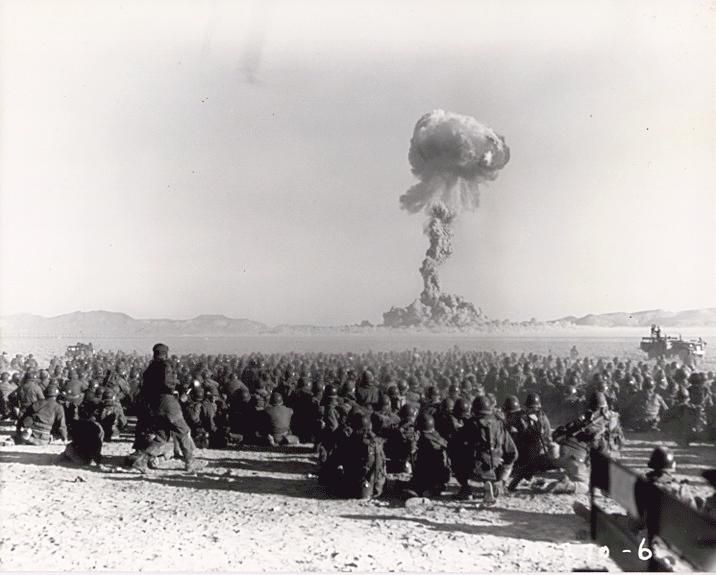
I did undertake to tell the story when I entered into a collaboration with Philip Stern several years ago, but for various reasons the Stern book includes only a small portion of the relevant information.
Now, however, Watergate and its aftermath have freed me of my inhibitions, and I regard it as important that my personal knowledge and recollection become part of the record. As I do not wish to repeat much of what has already been written and is generally known by interested persons, I shall limit the discussion here to a number of events and forces that contributed to the Oppenheimer tragedy.
Security Concepts
To begin with, one must take account of the ideological struggle over the concept of security. In the early months of the AEC’s existence, the battle was between those who urged the “Caesar’s wife” concept and those who urged the “whole man” concept.
“Caesar’s wife” approach. In this view, security clearance was “a privilege and not a right.” There were so many competent people seeking work in the program that the AEC did not have to take a chance on anyone with blemishing derogatory information in his security files. Thus, if there was any significant derogatory information at all that might be true, clearance should not be granted; and there was no need to waste time and money in trying to find out whether or not the information was true.
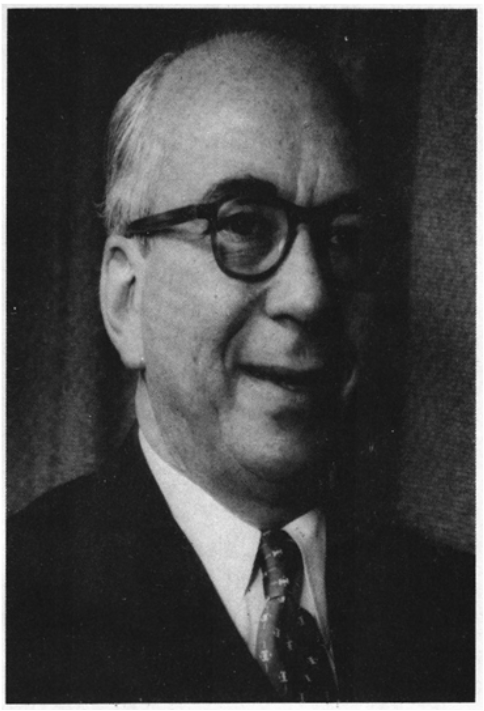
“Whole man approach. In this view, it was unfair to those enmeshed in the security net and to the atomic energy program itself to deny security clearance merely on the basis of derogatory information without giving the individual an opportunity to set the record straight and without considering favorable information that might outweigh the blemishes, as well as the importance of the individual to the nuclear program.
It was this view that prevailed, and the AEC security criteria and procedures promulgated in the late 1940s to codify this approach were widely hailed as the most liberal and equitable in the government. One consequence of the acceptance of the “whole man” concept was that
Oppenheimer and others with blemished backgrounds were granted Qclearance over the strong misgivings of “Caesar’s wife” advocates such as J. Edgar Hoover and Lewis Strauss.
Executive Order 10450
In November 1952, Dwight Eisenhower was elected to the presidency on a platform that promised the rooting out of communists, subversives, and security risks in government and the defense industry which, it was said, had been tolerated by the Roosevelt and Truman administrations. And one of Eisenhower’s first actions was promulgation in April 1953 of Executive Order 10450 establishing a government-wide security program.
This order was inartfully drafted by new officials who knew only myth and not fact about the security problem. It was susceptible to interpretation, and was in fact widely interpreted as requiring agencies to use the “Caesar’s wife” approach, and to rid government service of any person concerning whom there was any derogatory information that was determined to be true.
Promulgation of Executive Order 10450 required drastic adjustments in most federal agencies, since only a few had previously subjected employees to security screening. The AEC, however, had had a security program, mandated under the Atomic Energy Act of 1946, since its very inception. As a result of an exchange of correspondence and a conference between the AEC and the Department of Justice, Deputy Attorney General William P. Rogers wrote the AEC on June 8, 1953 that, since the AEC’s preexisting security program “exceeds the minimum standards of Executive Order 10450,” the Executive Order “requires no change” in the AEC’s program.
It will be observed, nevertheless, that the AEC initiated the proceeding against Oppenheimer under both its own security program and Executive Order 10450. Although the procedures followed were essentially its own, the AEC measured the significance of the derogatory information on Oppenheimer at least as much under the Executive Order’s criteria as the AEC’s own criteria. Thus, once it was established that substantial derogatory information about Oppenheimer was true, it followed under the “Caesar’s wife” interpretation of the Eisenhower Order that clearance was to be denied. Under the AEC’s own standards, on the other hand, the derogatory information would have had to be balanced against favorable information.
When the Eisenhower administration took office, Lewis Strauss served on the White House staff as the President’s special assistant for atomic energy. It was widely expected, moreover, that he would be appointed AEC chairman upon the expiration of Gordon Dean’s term on June 30, 1953.
In private life, Strauss had been a Wall Street investment banker. A close associate of Herbert Hoover, his political sympathies lay with the conservative wing of the Republican Party. He had been an original member of the AEC when it was established in 1946, and was known as a security zealot of the “Caesar’s wife” school. Strauss’ return to the atomic energy scene not surprisingly sent shock waves through those parts of the AEC concerned with security.
As security cases crossed my desk, I could see obvious indications of a changing order in the fact that security issues, which always had been dealt with in a tough (but fair) manner, were now being scrutinized under unarticulated tougher standards with less concern for fairness. I found, for example, that a high official in the general manager’s office was pressing to deny clearance because the individual in question was represented at the security hearing without fee by a house counsel of a ‘communist organization,’ that is, a staff attorney for the American Civil Liberties Union.
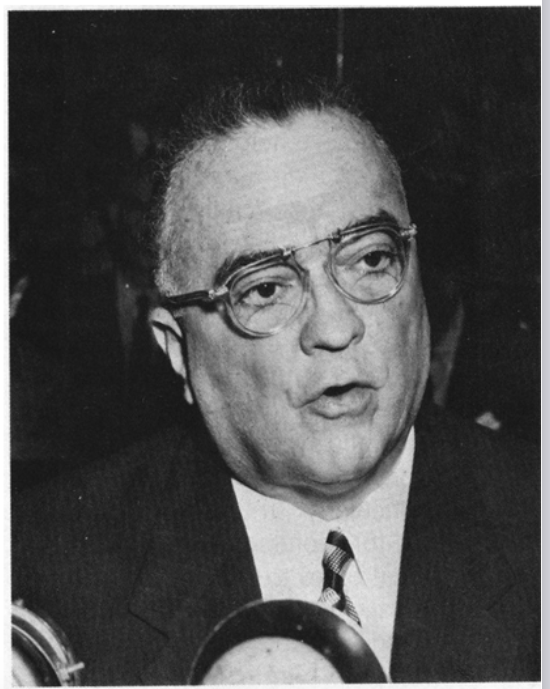
Operating through loyalists in the AEC’s security apparatus, Strauss began compiling dossiers on the attitudes of key personnel toward security. I was, for example, asked to provide information as to the attitudes of my colleagues in the general counsel’s office. More importantly, word coming from the White House was that Strauss would settle old scores and would, in particular, reopen long-closed security cases about which he had concern when he had been a commissioner from 1947 to 1950.
When Strauss assumed the chairmanship of the Commission in July 1953, I began to see old security files, long closed, on the desks of the general counsel and other high commission officials. Without exception, these were files of security cases of important individuals that had been decided in favor of clearance, but with some misgivings or controversy, during Strauss’ previous incumbency as a commissioner.
In addition, I soon learned from AEC security officials (some of whom were notorious gossips), who received their information from FBI sources, that Strauss had made a promise to J. Edgar Hoover to purge the Commission of several persons who were bones in Hoover’s throat. One of these was Oppenheimer, who was anathema to Hoover because of his former left-wing affiliations and what Hoover regarded as moral and character deficiencies, particularly in that Oppenheimer had told contradictory stories at different times to security officers and FBI agents about whether or not his friend Haakon Chevalier had approached him in 1943 for information about the atomic bomb project on behalf of a Russian agent.
Another Hoover target, curiously, was a high official in the AEC security program whom Hoover had once fired from the FBI and, therefore, detested.
Purging Methods
Strauss proceeded with consummate artistry to effect the desired purges. It was not his style to fire people. Instead, he used his contacts in industry, foundations, and educational institutions to produce career opportunities that the objects of his purges could not turn down.
It was somewhat more difficult in the case of the security official who was to be eliminated. Strauss told this man that he was concerned that his loyalty to Strauss through the years would leave him exposed to Strauss’ enemies when his term as chairman came to an end. Therefore, Strauss was actively seeking employment opportunities for his devoted friend.
A succession of attractive job opportunities were presented, but the security official rejected each one because he really wanted to keep his government position. He knew though that he was really being forced out. Finally, Strauss was forced to tell him that this was it: either he accepted the offered position or he would be dismissed. He accepted and departed with lavish tributes from Strauss for his loyalty and devotion.
This episode is by no means unique. It was the usual Strauss modus operandi for getting rid of people he did not want or like and, indeed, for persuading colleagues to do as he wished.
Strauss’ greatest weakness in the earlier portion of his chairmanship, including the entire period of the Oppenheimer case, was his almost paranoid distrust of the regular AEC staff, particularly with respect to security questions, and his tendency to rely primarily on his personal staff and a few others. A major figure in the inner circle was Charles Bates, a special agent of the FBI who was the FBI’s liaison with the atomic energy program.
Bates was an able but shadowy figure who spent a portion of every day at the AEC’s premises moving from one security office to another and with uninhibited access to the offices of the commissioners and the general manager. He came to pass on information, complaints, advice, and words of wisdom from Hoover. His activities were behind the scenes and off the record. Most of the sensitive communications between the AEC and the FBI were made orally through Bates, so there is no written record for the official historians to tap.
If Strauss used the velvet glove in dealing with personnel, the same was not true of General Manager K.D. Nichols. On several occasions I was summoned to the general manager’s office, handed a security file, and told “see what you can do with this one.” This meant that a decision had been made that the individual in question must be purged, and it was my task to draft a statement of security charges that could be used as persuasion.
This was fairly simple to do, since there were very few files that did not contain some data that could be used as the basis for a security action, such as slowness in paying bills, an episode of intoxication, or an informant’s interpretation of the individual’s behavior as odd. The scenario was to confront the individual with the charges informally in the hope that he would offer to resign rather than fight. The ploy was almost always successful. This was, of course, essentially what was tried with Oppenheimer, but it did not produce the desired result.
The victims of this technique included a high-ranking AEC official who had served in important management positions since the days of the Manhattan Project, and a lesser official who has since become a prominent political figure. No one could rationally regard these people as security risks, but the security charges were used as leverage to force them out.
Strauss had some difficulties in making good on his promise to Hoover to get rid of Oppenheimer. At the time he became chairman, there were three incumbent commissioners—Thomas E. Murray (a prominent Catholic layman and former industrialist), Eugene M. Zuckert (a lawyer with 15 years’ experience in a variety of government positions), and Henry D. Smyth (a Princeton physicist)-who had been appointed by President Truman—and were, in general, sympathetic with the past AEC security policies.
Shortly after his arrival as chairman, Strauss convened an extraordinary assembly of all AEC personnel to introduce the newly appointed fifth commissioner, Joseph Campbell (an accountant and former vice-president of Columbia University). And Strauss made it clear to those assembled that President Eisenhower had nominated Campbell at Strauss’ request. No one had any doubt that Campbell would be a Strauss ally. Still, Strauss could be outvoted three to two.
As Agency Head
Up until Strauss’ appointment, the chairman had been regarded as the “first among equals” and as the AEC’s official spokesman, with no rights or powers greater than those of the other commissioners. But from the moment of his arrival on the scene, Strauss began maneuvering to establish himself as the “agency head” with power to make unilateral decisions on important and sensitive matters. In this maneuvering, he used as leverage his continuing position as a special assistant to the President, which gave him access to White House information pertaining to the atomic energy program—information, he said, he was duty-bound to keep from his fellow commissioners in order to preserve the confidentiality of presidential discussions.

Within a few weeks, there commenced a barrage of memoranda from the chairman’s office to the AEC general counsel, William Mitchell, seeking to nibble away at the established AEC structure and particularly at the procedures used in security cases.
Mitchell’s Opinion Memo
The most dramatic was a memorandum from Strauss personally asking for confirmation of his opinion that since, under the Eisenhower Security Order, each “head of agency” had a duty to make security clearance determinations, he, as chairman, was the head of the agency and had personal authority and responsibility independent of the other commissioners to revoke and deny security clearance. It so happened that, beyond any doubt whatsoever, Strauss’ opinion was dead wrong, and the general counsel so informed Strauss in a reply memorandum setting forth the legal bases for his conclusion.
On January 18, 1954, Strauss then wrote Attorney General Brownell requesting his opinion on precisely the same question. The timing is significant, since this was the period (within a month after initiation of the proceeding against Oppenheimer) during which the commission was considering procedures for handling that case. To my personal knowledge, the letter to Brownell was written following discussions between Strauss and Hoover, via Special Agent Bates.
Strauss and Hoover were concerned that, if the final Oppenheimer decision were to be made by the full commission, the three holdover commissioners would vote for continuation of Oppenheimer’s clearance. Therefore, to ensure Oppenheimer’s ouster, it was necessary that the AEC General Counsel’s opinion be overruled so that Strauss personally and solely would decide the matter. Bates informed Strauss that Hoover discussed the matter with Brownell. Hoover had received a commitment from Brownell that he would—if Strauss sought his opinion—give Strauss the legal opinion he wanted that would establish Strauss, contrary to Mitchell’s opinion, as agency head with sole responsibility and authority for making security clearance decisions.
Remarkably, Strauss did not inform Mitchell that he was going over his head to the Attorney General. Nor did Strauss forward to the Attorney General a copy of Mitchell’s opinion memorandum on the question. I became aware of the situation through my Security Division clients and informed Mitchell that Strauss had requested the Attorney Generals opinion. Mitchell was visibly shaken, shrugged his shoulders and said, “Well, if that’s what the chairman wants to do, there’s nothing I can do about it.” In actuality, Brownell could not and did not deliver.
In a reply to Strauss dated January 29, 1954, Deputy Attorney General Rogers avoided coming to grips with the question, pointing out that the chairman of a commission “is generally considered to be the head of that agency unless the full … commission affirmatively votes to limit the power of its Chairman.” Even this unhelpful reply was tempered to avoid torpedoing the Strauss objective, since Rogers could and should have told Strauss that the statute on which the Executive Order was based contained language explicitly inserted to make it clear that the chairman of the AEC had no authority to act independently of the full Commission.[1]
Strauss never really understood the relationship of Executive Order 10450 to the AEC’s security program. In 1954, the Eisenhower administration was engaged in its infamous “numbers game” to generate statistics showing that thousands of federal employees inherited from the previous administration were being discharged as security risks under the Executive Order. When, as part of this effort, the AEC had to respond to a Civil Service Commission questionnaire, Strauss repeatedly refused to sign the transmittal letter because the reply form showed that only one employee (Oppenheimer) had been suspended on security grounds since the Executive Order became effective. Strauss sent the papers back to the Director of Security with a note saying, “John, are we really this good?” And he demanded that the numbers be beefed up.
What Strauss failed to recognize was that, unlike other agencies, the AEC always had a security program at least as stringent as that prescribed under Executive Order 10450. Thus, since security risks had already been screened out, obviously there would be occasion to take security action against only a very few, if any, incumbent employees who had previously been investigated and cleared.
In this connection, Strauss’ published memoirs contain an illuminating passage. In describing the White House meeting on December 3, 1953 at which Eisenhower issued his “blank wall” directive, Strauss reports that the President asked whether the AEC had conducted a hearing on the charges against Oppenheimer as required by the Executive Order.
Strauss replied “that there had been no hearing since the order was promulgated, but that the AEC was engaged in applying the directive to all employees,” including consultants such as Oppenheimer. Strauss’ statement was totally untrue since, in reliance on Deputy Attorney General Rogers’ letter of June 8, 1953, the AEC regarded the Executive Order as totally inapplicable to its security program and had taken no action whatsoever to implement the order.
I do not know what prompted William Borden to write the letter to Hoover that initiated the case. It was, however, a culmination of a long concern about Oppenheimer’s loyalty and trustworthiness. And it came as no surprise that someone pulled the trigger to fire the shot I had expected ever since I learned that Strauss had promised Hoover that he would purge Oppenheimer.
The fact that Oppenheimer was the subject of long-standing security interest is vividly disclosed in the dissenting opinion of Commissioner Henry Smyth telling us that “for much of the last 11 years [that is, since 1943] he has been under actual surveillance, his movements watched, his conversations noted, his mail and telephone calls checked.” This surveillance, obviously would have been under the aegis of the FBI, at least from 1946 on.
That Oppenheimer was a target is also demonstrated by certain events, not previously disclosed, concerning the perjury prosecution of Joseph Weinberg (the so-called “Scientist X”) in 1952.
Weinberg episode. A former student of Oppenheimer’s at Berkeley, Weinberg was employed at the Radiation Laboratory and was believed by the FBI to have been a communist and to have been involved in Soviet espionage. He was indicted for perjuring himself in denying that he had attended a closed meeting of the Communist Party in Oppenheimer’s Berkeley home in 1941
In 1952, a week or so before the Weinberg trial was to begin, a security official of the AEC and I were called to attend a meeting in the Criminal Division of the Department of Justice. We were informed that Oppenheimer would be called as a witness in the Weinberg trial, that it was expected that he would perjure himself in denying that such a meeting had been held at his home, and that the Department of Justice would attempt to impeach his credibility and perhaps indict him for perjury. We were asked to inform the Commission in order that it could prepare for the public relations and political impact.
At the trial, it was clear that the prosecutor, Assistant United States Attorney William Hitz, was thinking more about Oppenheimer than Weinberg. At one time during the trial, in a context totally unrelated to Oppenheimer, he referred to Weinberg as “Dr. Oppenheimer.” Precipitously, however, Hitz rested his case without getting into areas involving Oppenheimer.
Every lawyer in the courtroom recognized, when Hitz rested his case, that there had to be an acquittal, even without defense testimony, since the perjury case simply had not been made. It is my belief, based entirely on circumstantial considerations, that President Truman ordered the Attorney General to order Hitz to refrain from introducing the Oppenheimer-related evidence that would have been necessary to convict Weinberg.
Although Dr. Holl stated in his 1975 paper (citing Chairman Gordon Dean’s diary) that from the outset AEC officials knew that there was no substance to the allegations implicating Oppenheimer, this is not accurate. Oppenheimer’s defense (that is, the evidence placing him at a distant location on the day in question) was known to AEC officials, but they also knew of impressive evidence to the contrary.
In any event, the brush with political disaster in the Weinberg case led to Oppenheimer’s departure from the General Advisory Committee and to the beginning of a gradual winding down in Oppenheimer’s access to atomic energy secrets.

Role of FBI. In assessing the origins of the Oppenheimer case, it is relevant to consider some events that transpired after the case was initiated. The most important of these was the role of the FBI.
In my personal involvement with hundreds of AEC personnel security cases, I had never encountered one in which the FBI played an affirmatively cooperative role. In Hoover’s view, the FBI’s role ended when it delivered its investigative reports to the AEC, and requests for additional information were invariably met with, at best, grudging compliance. When, however, I was drafting the charges against Oppenheimer, I found myself the recipient of a telephone call from an FBI official urging that I call upon the Bureau for any assistance or further information I might need.
Once the charges were handed to Oppenheimer he was kept under particularly close FBI surveillance. Holl stated in his paper that Hoover, although “careful not to reveal the source of his information, … kept the Commission posted on Oppenheimer’s search for legal counsel and other matters pertaining to the case.”
In January 1954, I personally saw an FBI report that unmistakably was based upon electronic surveillance of the offices of attorneys whom the FBI correctly assumed Oppenheimer would consult immediately upon being informed of the charges against him. This FBI report undoubtedly crossed my desk by mistake. It was the kind of document that was to be destroyed after reading or kept in special files with sharply limited access to preclude its becoming a part of history, current or otherwise.[2]
Moreover, a horde of FBI agents was at AEC attorney Roger Robb’s disposal during the hearing itself to check out witnesses, run down new information, etc., just as if it were a criminal prosecution. As a matter of fact, throughout the hearing, Robb was the beneficiary of instant reports on the most intimate conversations among Oppenheimer and his counsel. Indeed, the AEC prosecutors and FBI aides joined in a victory dinner at the Chevy Chase Country Club when the Gray Board announced its decision. This FBI involvement would not have been possible in the absence of outright zeal by Hoover to “get” Oppenheimer.
Abnormal Procedures
I agree with Holl’s opinion that the Oppenheimer case cannot properly be explained as a Strauss vendetta against Oppenheimer. Although Strauss promised Hoover that he would purge Oppenheimer, my own view is that Strauss wanted and intended to accomplish this more gently and with subtlety. The Strauss scenario was, however, interrupted by Eisenhower’s “blank wall” directive. The commissioners, the general manager, and the general counsel—none of whom had any particular knowledge of or experience with the commission’s security procedures—reached the conclusion, unguided by the security professionals, that the President’s directive required the initiation of a formal security proceeding against Oppenheimer.
Once this decision was made, as Holl notes, both the commission and Oppenheimer were locked into the formal proceeding with no feasible way to compromise or make a graceful exit.
More importantly, however, once the decision was made, the situation evolved into a savage prosecution. Hoover was determined that this time Oppenheimer would not emerge with his credibility and reputation intact, and the Administration was determined to exact the pound of flesh demanded by Executive Order 10450. Moreover, the case was seen in political terms as another opportunity to demonstrate that the previous Democratic administrations were harboring dangerous subversives.
In the discussion period following Holl’s presentation at the December 1975 meeting of the American Historical Association, he disclosed the following previously unreported bit of history. During the final days of the AEC’s consideration of the case, Strauss informed President Eisenhower of his concern that Commissioners Smyth, Zuckert, and Murray would vote to restore Oppenheimer’s clearance. According to Strauss’ memorandum of this conversation, the President urged him to use all his efforts to bring these commissioners around. A few days after the commission’s decision, Eisenhower wrote Strauss congratulating him on the result.
Never before had an AEC security proceeding been launched with the predetermined objective of establishing that the individual concerned was a security risk. Indeed, in the past it could fairly be said that the AEC security hearings were intended primarily as a vehicle for clearing the individuals involved. However, in this case there was a special prosecutor, Roger Robb, renowned for his ability as a cross-examiner. Of more significance, perhaps, the case was taken entirely out of the hands of the AEC’s Division of Security. Only one member of the AEC’s security staff was directly involved in the case—C. Arthur Rolander, deputy director of the Security Division, who had had virtually no prior experience in the personnel security program. Rolander was, however, completely detached from his regular duties to work with Robb.
The personnel security professionals, although they had some concern about Oppenheimer’s background, were generally of the view that he was not a security risk. Moreover, schooled in the tradition that a security hearing was “an inquiry and not a trial,” they would not be temperamentally suited to play a prosecutorial role.
Teller’s testimony. One illustration of the role of Robb related to the testimony of Edward Teller. A number of the charges against Oppenheimer were taken from a statement given to the FBI by Teller. When he testified (under oath) before the Gray Board, Teller’s testimony was tame, bearing little relationship to what he told the FBI off the record.
Inexplicably, Robb was willing to accept this watering-down of his case. If he were interested in establishing the truth, however that might cut, as was his obligation under both the AEC’s procedures and Executive Order 10450, he should have attempted to impeach Teller’s credibility. Alternatively, if his objective was to make the case against Oppenheimer as effectively as possible, Robb should have pressed Teller to repeat under oath his earlier allegations.
More importantly, the Gray Board itself, which had before it Teller’s statements to the FBI, was apparently not interested in ascertaining why Teller had so changed his opinions.

Gray Board. Another matter of interest was the selection of the Gray Board. When it became clear in mid-January that Oppenheimer would demand a hearing, William Mitchell, the general counsel, was assigned the task of recruiting a three-member Personnel Security Board.
When he sought my views, I urged that the board be selected from among those persons with substantial previous experience on AEC Personnel Security Boards. Each AEC office maintained a panel, consisting principally of prominent local residents, from which these board members were drawn on an ad hoc basis. Some of these boards had impressed me with their ability, fairness, and toughness, and I urged that a board be chosen from the Chicago Operations Office panel, which had handled several very difficult cases in a particularly impressive manner.
Mitchell told me the commission rejected this idea because it thought that the members of the board should, in order to gain public acceptance of the decision, be of stature comparable to Oppenheimer’s.
Mitchell traveled around the country seeking recruits. The first member signed on was Gordon Gray. The second was industrialist Thomas Morgan. Neither of them had had any previous involvement in AEC security cases. It was decided that the third member should be a scientist who had previously served on an AEC board. AEC security officials were asked to delve into old files to identify candidates and to form an estimate from the record as to the “softness” or “toughness” of each. After intensive compilation and analysis of attitudes and voting records, Ward V. Evans was chosen as the third member of the panel.
Evans had previously served as a member of Chicago boards, and I recognized him as one who was particularly “tough.” Ironically, he dissented from the Gray Board’s recommendation that Oppenheimer’s clearance be revoked.
There was no question, as the Board was being recruited, that the AEC was looking for three members who would have a predisposition to find against Oppenheimer. Although pains were taken to maintain a facade of seeking members with a fair and judicious attitude, the major consideration was whether the candidate would shrink from revoking Oppenheimer’s clearance. My knowledge that a “hanging jury” was being chosen was one of the reasons that I asked to be relieved of any further role in the case.
To reinforce the board’s assumed predisposition, the board was brought to Washington a week before the hearing commenced for indoctrination by Rolander and Robb. Not only were they given an outline of the derogatory information against Oppenheimer; but, more critically, they were given indoctrination into the letter, spirit, and meaning of the AEC and Executive Order 10450 security criteria and procedures. This was, in a sense, “the blind leading the blind,” since neither Robb nor Rolander had any real comprehension of what was involved or of the traditions of the AEC personnel security program.
It was clear to me at the time that the board was being authoritatively, but incorrectly, told by Rolander and Robb that the AEC’s security program was based on a kind of “Caesar’s wife” principle.
In fact, the Gray Board opinion on its face shows that it did not understand the AEC procedures. For example, despite the clear mandate of the AEC’s procedures that the Board act as “practical men of affairs … guided by the same considerations that would guide them in making a sound decision in the administration of their own lives” on the basis of an “overall, common-sense judgment” taking into account all relevant information, favorable or unfavorable, the Gray Board asserted that it might have been able to find in favor of Oppenheimer “if we were allowed to exercise mature practical judgment.”
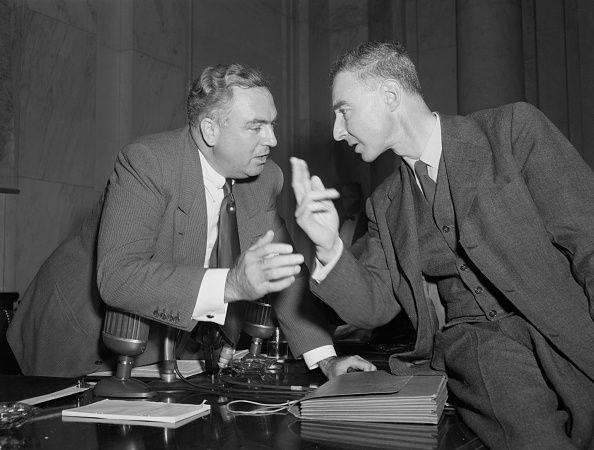
Mythology of security. Perhaps the most striking aspect of the Oppenheimer case is the fact that, on the government’s side, every action that was taken was by persons who were not actually involved in and knowledgeable about personnel security matters.
These included the President, the Attorney General, the five AEC commissioners (who only rarely were exposed to particular security cases), the AEC general counsel, Robb and Rolander, and two of the three members of the Gray Board. Even General Nichols, the AEC’s general manager, had very little contact with security cases, since the general manager’s authority in these cases had been delegated to a subordinate.
One consequence of this was that decisions in the case were made more on the basis of a mythology of security than on the basis of any genuine principle.
Transcript released. On June 15, 1954, the 992-page printed transcript of the entire Oppenheimer hearing was released to the press. This was two weeks prior to the commission’s final decision in the case and violated the assurance given to each of the 40 witnesses that the proceedings were to be treated as confidential and that the AEC would not initiate any public release.
In his Men and Decisions, Strauss states that the commission printed and released the transcript because a member of the commission had lost “a portion of his transcript” on a train; in fact, it was a digest of portions of the transcript. According to Strauss, it was this event that led the commission to “make a general release in advance of a possible unofficial publication” of the lost document. Strauss also stated that consent of all witnesses to such publication was obtained.
The Strauss version is inaccurate.
The fact is that publication of the transcript was first considered at a meeting of the commission on June 7, four days prior to loss of the document, although the decision to send the transcript to the public printer was not made until June 12. Actual release of the transcript was authorized at a commission meeting on June 14, a full day after the lost document had been found and returned to the AEC.
On June 14 and 15, after the decision to release the transcript was made, Nichols, Mitchell and Rolander worked around the clock to contact all 40 witnesses, not for the purpose of obtaining their consent but only to inform them of the AEC’s decision.
The fact of the matter is that an electronic bug had picked up a conversation among Oppenheimer’s attorneys to the effect that publication of the transcript would have a devastating effect on Oppenheimer’s image. This suggested to Strauss that the transcript should be published to bring Smyth, Zuckert and Murray into line. Zuckert’s loss of the document was nothing more than a convenient excuse for Strauss to use to force publication.
Lieutenant General Leslie R. Groves had served in the United States Army from 1916 to 1948, and during World War II he directed the atomic bomb project. In his testimony before the Gray Board he stated, in response to a question by Roger Robb, that “The Army as a whole didn’t deal with matters of security until after the atomic bomb burst on the world because it was the first time that the Army really knew there was such a thing.”
True, the Army always had a security program. But Groves’ point was that through the World War II era security judgments rested primarily upon the informal appraisal by superior personnel of their personal confidence in their subordinates. It was not until the mid to latter 1940s, when many Americans came to fear a communist threat to internal security, that a security program was created involving rigid requirements for investigation, appraisal of trustworthiness against written criteria, and determinations of eligibility for clearance in formal proceedings that had many trappings of the judicial process.
The Oppenheimer case arose within the first decade of this new demi-jurisprudence.
There were few individuals knowledgeable or expert in the field. There were no established traditions.
There were no publicly available precedents on which to rely for guidance. And there were no judicial expositions of relevant constitutional principle.
This demi-jurisprudence was administered by officials motivated by an amalgam of patriotism, xenophobia, rigid morality, fear of conspiracy, self righteousness, and a desire to survive in the bureaucratic jungle. In the absence of any established procedures for judicial review, compounded by the initial reluctance of the federal judiciary to become involved, the law of security was what these officials said it was. Countless thousands of good Americans, Oppenheimer among them, were hounded from their jobs by these officials for the sake of protecting the nation against a handful who might, in fact, be dangerous.
One is tempted in the post-Watergate climate to characterize the Oppenheimer case in terms of “abuse of power.” In my view, it was more an “abuse of law”—the invention and application of a body of law that, in fact, had very little claim to existence except in the minds of its ministers.
I have little doubt that Hoover, Strauss, Robb, Gray, and others did, with respect to Oppenheimer, precisely what they sincerely believed the law (perhaps aided by a higher morality) required them to do. Eisenhower and Strauss, for example, were undoubtedly of the view from the very outset that the law required a hearing to give legal blessing to the final revocation of Oppenheimer’s clearance which, they believed, was inexorably mandated by law.
Other factors, such as personal animus and Republican politics, although obviously present, were incidental rather than motivating factors.
The abuse of law that was the essence of the Oppenheimer case was rectified within the next decade as the courts stepped in to bring the demi-jurisprudence of security into consonance with the requirements of due process. The costs of the abuse, in human misery and disruption of government function, were incalculably enormous.
Viewed as abuse of law, the Oppenheimer case has much in common with the Watergate affair. Hopefully, we have learned more from the latter than we did from the former.
Endnotes
[1] Executive Order 10450 was based on Public Law 81-733 enacted in 1950 which authorized certain agency heads summarily to suspend employees as security risks. The agency heads given this authority were all listed as individuals (for example, the Secretary of the Army, the Chairman of the National Security Resources Board, etc.), except that in the case of the AEC the authority was given to “the Atomic Energy Commission.”
In an earlier version of the bill, the authority would have been given to the “Chairman of the Atomic Energy Commission,” but this was changed for the explicitly stated reason that the chairman possessed no authority independent of the full commission.
[2] Stuart H. Loory, in the Chicago Sun-Times of March 13, 1977, reported that among FBI records made available to him under the Freedom of Information Act is a January 5, 1954 FBI memorandum that explicitly states that “technical surveillance” of Oppenheimer “might disclose attorney-client relations.”
Together, we make the world safer.
The Bulletin elevates expert voices above the noise. But as an independent nonprofit organization, our operations depend on the support of readers like you. Help us continue to deliver quality journalism that holds leaders accountable. Your support of our work at any level is important. In return, we promise our coverage will be understandable, influential, vigilant, solution-oriented, and fair-minded. Together we can make a difference.

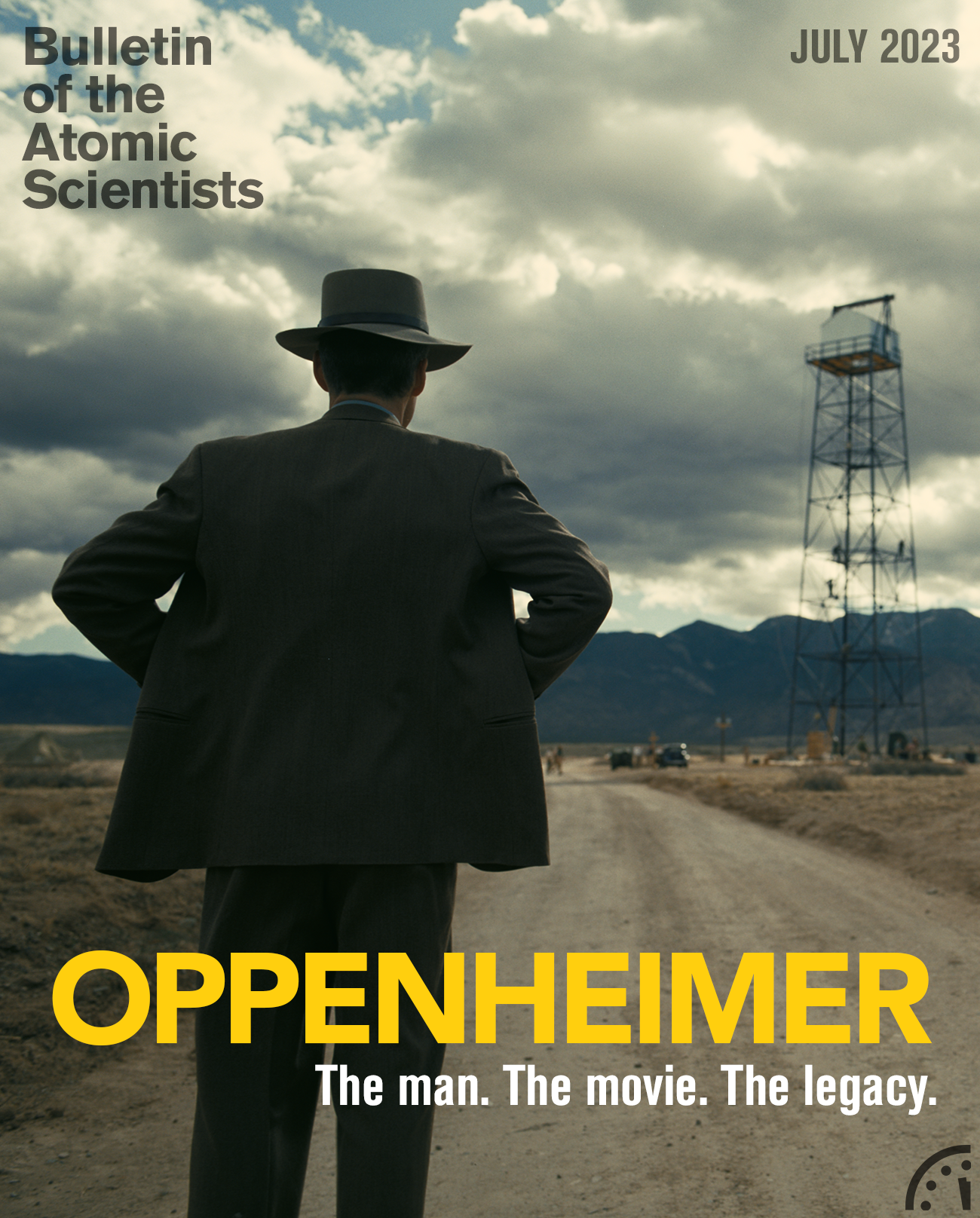





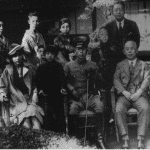














I have trouble with your lack of doubt over the ethics of J Edgar. He was a political power broker whom we know acted amorally at best in numerous other ways, spying illegally on us, introducing plants at anti Viet Nam War protests and within civil rights activities, and bullying his own personnel to establish a false science of lead in bullets (that the lead in each box of bullets had a unique metallurgical fingerprint), fibers and hair analysis. I’m sure there was more abuse. Was he that deluded by his unchecked executive powers to believe his means could justify… Read more »
From what I understand, McCarthyism should’ve gotten called Hooverism. J. Edgar Hoover was the brains behind the war on civil liberties, while Joe McCarthy was merely a blowhard running his mouth.